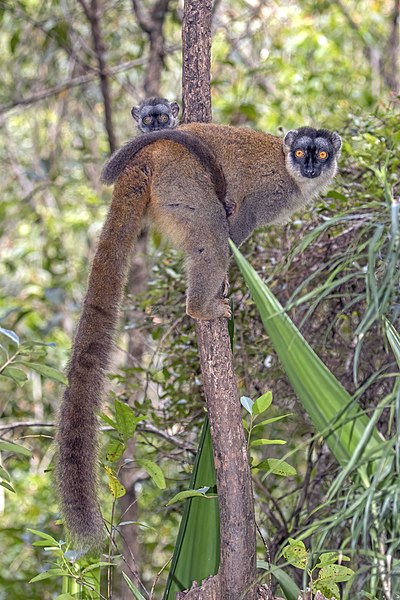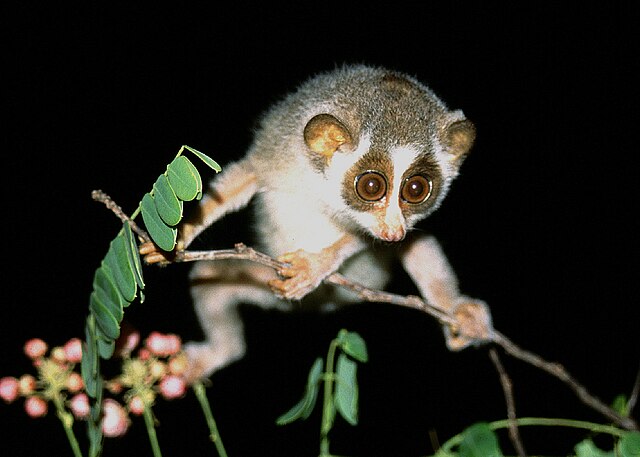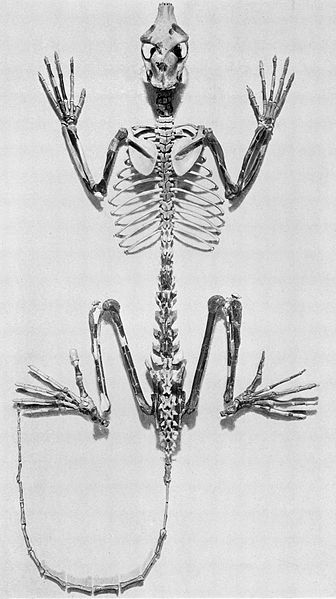Lemuridae is a family of strepsirrhine primates native to Madagascar and the Comoros. They are represented by the Lemuriformes in Madagascar with one of the highest concentration of the lemurs. One of five families commonly known as lemurs. These animals were once thought to be the evolutionary predecessors of monkeys and apes, but this is no longer considered correct. They are formally referred to as lemurids.
Lemuridae
Strepsirrhini or Strepsirhini is a suborder of primates that includes the lemuriform primates, which consist of the lemurs of Madagascar, galagos ("bushbabies") and pottos from Africa, and the lorises from India and southeast Asia. Collectively they are referred to as strepsirrhines. Also belonging to the suborder are the extinct adapiform primates which thrived during the Eocene in Europe, North America, and Asia, but disappeared from most of the Northern Hemisphere as the climate cooled. Adapiforms are sometimes referred to as being "lemur-like", although the diversity of both lemurs and adapiforms does not support this comparison.
Strepsirrhini
Early primates possessed adaptations for arboreal locomotion that enabled maneuvering along fine branches, as seen in this slender loris.
Notharctus, a type of North American adapiform, resembled lemurs but did not give rise to them.
The suborder Strepsirrhini was proposed by É. Geoffroy in 1812.





